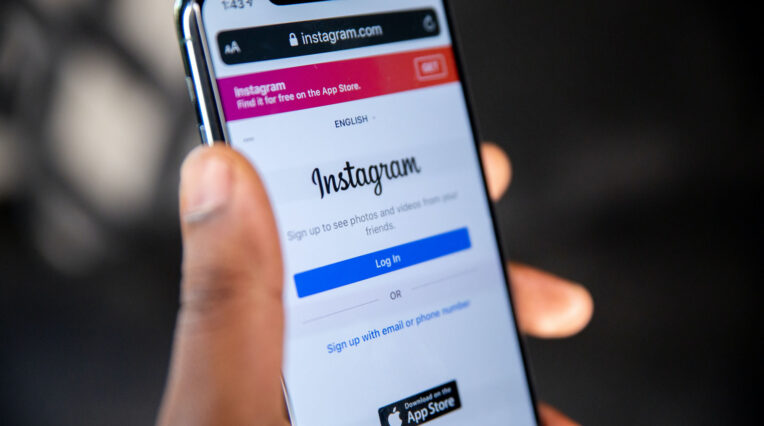20/11/2021
The power of storytelling in marketing

In this guide, we’ll cover:
- The relationship between storytelling, marketing and the Ancient Greeks
- Examples of persuasive marketing using pathos, logos and ethos
- How to use storytelling in your organic content and social media
- Building an effective content calendar
- Carving out a clear content path for your business
Introduction
Telling stories through content and social media
The Ancient Greeks knew that messages were only compelling when they had elements of pathos, logos and ethos. (you’ll learn what they mean throughout this guide). Of course, data and analysis is key to any digital marketing campaign, but don’t lose sight of the importance of telling a good story.
In this guide you’ll learn how to use the power of storytelling through organic social media and content, how to create a content calendar and you’ll gain a real understanding of why storytelling will play such a vital role in helping you to generate new business.
Why bother with storytelling in marketing?
Storytelling is an innate part of the human experience, from stories we’re told as children by our parents, to those we eagerly recite to friends and colleagues.
The power of a good story lies in the ability of the storyteller to create a world so vivid that their listeners can imagine themselves a part of it. In marketing, there is no greater power than enabling your customers to imagine themselves in need or want of your service or product. When they can see how what you’re offering fits into their own lives, they are far more likely to invest in it.
Storytelling in marketing drives deeper engagement with your customers and elevates your product beyond its features and benefits. This gives you the chance to truly distinguish yourself from your competitors by creating an emotional connection with your customers. Without a good story, your efforts to push your products can at best become mundane and at worst, off-putting as customers feel pressured by overtly salesy pitches.
Storytelling ultimately makes your marketing efforts more persuasive. So what does this have to do with the ancient Greeks?
Ancient Greeks and the science of persuasion
The phrase ‘the art of persuasion’ often leads people to believe that persuasion is an innate talent that can’t be taught. You either have it, or you don’t. Thankfully, this couldn’t be further from the truth.
Arguably, one of the most famous ancient Greeks, the philosopher Aristotle, created the science of persuasion. He broke down persuasion into three elements: logos, pathos and ethos. Incorporate these into your social media and content, and you too can craft a story that will persuade your customers to click, buy, register, sign up, you name it.
Here is what each of those three elements means in practice
Logos
Translated from ancient Greek, logos means reason. It refers to the logical part of an argument. In the case of your marketing, it argues that your product or service is worth investing in due to the simple facts. When faced with cold, hard data or stats, it’s hard to reason against it.
For example: Sensodyne toothpaste is the #1 dentist-recommended toothpaste for sensitive teeth.
Pathos
Pathos literally means suffering, but in the context of Aristotle’s full-proof method of persuasion, it refers more broadly to eliciting an emotional reaction in your audience.
For example: a Legal & General life insurance poster of a smiling mum and her two young children dressed up as monsters. The poignant caption reads, “How would your little monsters cope without you?”
Ethos
Ethos means character or disposition and refers to the credibility and trust you need to build as a brand. Without ethos, logos and pathos mean nothing. At a grassroots level, this takes time to build with customer testimonials and referrals. But from a marketing perspective, a quick and effective way to communicate this is through endorsements by thought leaders, experts, influencers and celebrities.
For example: Nike promoting its Phantom football boots with a TV ad featuring a host of footballers including Philippe Coutinho, Mallory Pugh and Neymar Jr.
This triumvirate of persuasion (logos, pathos and ethos) gives every story you tell greater reach, as you pique the interest of your customers and they do the job of spreading your story for you.
Today that means sharing posts, blogs and other content across any number of social media platforms. But back in ancient Greek times, getting a story to go viral was more challenging. This makes those select few, enduring ancient Greek stories even more inspiring, and importantly, informative when it comes to tips for promoting your product or service.
A helping hand from Homer
Take Homer, legendary author of the epic poems ‘The Illiad’ and ‘The Odyssey’, both still recited over 3000 years after they were first told. These tales were about wars, sieges and heroic voyages starring Gods, royals and warriors – not exactly things your everyday Greek could empathise with.
So how did Homer manage to get generation after generation retelling his stories? How did he get his audience to spread the word about his poetry?
And how can you do the same with your product?
Homer made it relatable. He did this in several ways, one of which was to use chunks of poetry from previous tales (copyright not being an issue back then) to add familiarity. Another approach was to use epithets every time he introduced one of his larger than life characters. It wasn’t just Odysseus, but the witty Odysseus or the intelligent Odysseus. His audience could then connect to this fictional character and the unfolding story by imagining someone they knew who was similarly witty or intelligent.
Homer essentially made his audience feel a part of the story.
If you can get your target audience to feel a part of the story you’re telling, you can take them on a journey with the final destination being the purchase of your product or promotion of your brand.
Now you know how the kings of storytelling, the ancient Greeks did it, it’s time to put storytelling to work for your organic content and social media.
Storytelling in your organic content and social media
Organic content and social media refers to posts that are not paid to be promoted.
Instead, potential customers encounter this content organically, whether that’s through an organic search result on Google, a share from a friend or while browsing a social media platform.
These individuals aren’t necessarily looking to make a purchase right at that moment, but that doesn’t mean a good story couldn’t catch their attention and start them on that journey. This is when it’s critical to get your storytelling right, after all, you’re likely looking at a matter of seconds before a potential customer has moved on or switched off.
Getting started
Before you start crafting your stories, take a moment to answer these two key questions:
- What type of audience do you want to target?
- How do you want that audience to perceive your business?
These answers will help you to set the tone and direction of your stories. Now consider your story arc. An individual social post may only have a few seconds to make an impact, but this shouldn’t stop you from laying out the narrative elements your audience will expect once you’ve hooked their attention.
These elements are the same as those employed in good fiction, or timeless Ancient Greek poetry: an unexpected hero or heroine, a challenge that needs to be overcome, a climax and resolution (that last bit being courtesy of your product or service).
Don’t limit yourself to just the immediate needs of your target audience. Bagging a bargain or taking advantage of a flash sale can get you immediate results, but for brand loyalty, it’s worth digging deeper to find out what about your product or service, is meaningful to your target audience. If you can work this into your story, you can show them how what your offering is a lifestyle choice, and is something that will meet their ongoing needs.
Now let’s take a look at a few of the different social media platforms and how you can leverage the storytelling opportunities they present.
Photo albums
A picture is worth a thousand words, so why not try 20 or 30? Capture key moments at your next product launch event or team day and tell your story through the best photos taken on the day.
Live videos
While short and snappy one-minute videos work well on Facebook, live videos give you the edge of engaging with your audience in the here and now, lending greater authenticity to your story. They are also ranked more highly in the news feed. Try backstage glimpses at your business, or offer up tips and tricks and demo them in action.
Stories
Photos, videos and animations can all be shared via Facebook Stories, with added effects to help make your content even more eye-catching. As Facebook itself says “let your camera do the talking for you”.
These Stories disappear within 24 hours and all engagement happens through Facebook messenger, rather than comments or likes. This adds to the ‘in the moment’ feel. In fact, Chief Product Officer of Facebook, Chris Cox, claims that Stories are set to overtake the news feed in shares this year, so it’s well worth getting in on the action.
Captions
A stunning, high-resolution image makes for a great Instagram post, but you can take it a step further and turn it into a story with creative captions. Captions are truncated after 125 characters but if you can grab a reader’s attention as you set the scene to your story, Instagram offers you up to 2200 characters to draw them in further.
Curate
Interact with your target audience by turning them into storytellers. Create a branded hashtag, ask them to use it to share their stories, and then re-post the best of the bunch. Or better yet, offer a discount or voucher to whoever posts the best photo. With this curated content, your target audience are quite literally a part of the story.
Videos
Instagram videos give you a maximum of 60 seconds to tell your story but you’d be surprised how much you can say in that time. Try sharing your personal story of how your business was created and use on-screen captions to move the story along. You can always add more meat to the bones of your story in the text caption below your video.
Stories
Post a series of short videos without overloading your profile grid or feed using Instagram Stories. They’ll disappear after 24 hours and will appear as a collection in a slideshow format. This gives you the scope to tell a fully fleshed out story in bite-sized chapters. The possibilities are endless: turn a popular blog into a reel of Instagram Stories, show a variety of customers using your product in different ways, or capture a day in the life of people in your business.
Tweetstorm
Twitter isn’t just for pithy one-liners anymore. With a tweetstorm you can tell your story in parts. Just add a number at the start to help readers follow it through. It’s a great way to share your stream of thoughts or unsurprisingly, any content that fits nicely into a Buzzfeed-style list.
Moment
To stylise your story for even more engagement, Twitter moments fit the bill. This functionality allows you to string together multiple tweets into a slideshow, presented with an eye-catching cover photo. Keep the number of tweets to around ten and include a variety of videos, photos, and GIFs. Consider putting out a Twitter moment on what’s new, changing or trending in your industry.
Hashtags
Creating a branded hashtag that goes viral can get your business great exposure but sometimes good storytelling is simply about being a part of the conversation. Engage with your target audience by finding trending hashtags, which are relevant to your industry, and get tweeting. Share your views and reactions to keep the conversation going and the story evolving.
More storytelling platforms
There are, of course, many other social media platforms, which you can leverage to tell your story.
Snapchat
For businesses with a physical presence, you can create Snapchat geofilters so customers can easily share their experience of your service or product.
YouTube
Continues to reign supreme with videos of all lengths and styles. Tap into its power with regular content in a variety of forms, from listicles of the best ways to use your product or service, to behind-thescenes videos to put a human face to your brand and interviews with experts and influencers.
For B2B, let’s not forget LinkedIn, with its Pulses and SlideShare for sharing great infographics, videos and presentations.
People use Pinterest for different reasons than they use other platforms such as Facebook and Instagram. Users are specifically looking for inspiration (both ideas and products to buy). Using a mix of images and videos, your stories have the potential to be delivered to a valuable demographic, all actively looking to discover a new brand or product.
Storytelling on your website
Interesting, informative and attention-grabbing blogs, videos and landing pages can turn your website into a destination, one that keeps current customers engaged with regular, quality content and nurtures new visitors to your website, with the goal of converting them.
All of the above content can reveal why your business has the edge over others by showcasing your knowledge and know-how without overtly boasting about it. It can also cut through the formality of the customer-seller relationship.
With the power of storytelling, you can speak to your customers on a more personal level and address the problem or need that is ultimately driving them to your business but without the brute force approach of traditional ads. You can, in essence, put yourself in their shoes.
With that in mind, remember to always create your web content for your customers, not yourself. This may sound obvious but it’s easy to slip into pushing your product or service too hard. Yes, your product or service can ultimately be the hero in your story but with any good story, the journey is just as important.
Make sure the journey you take your customers on addresses a problem they have or provides unique insights into your industry, which they can take away with them.
With web content to write, videos to record and social media posts to craft, you’re going to need to stay organised to ensure you are putting out regular content that is of a consistently high quality. That’s where a content calendar is invaluable.
Creating your content calendar
Creating a content calendar may seem like a big investment in time you don’t have, but in the end it really will save you time.
It also means you’re far less likely to be scrambling for content at the last minute.
Here are the six steps you need to follow to create your content calendar:
Step 1 — Determine your style and choose your topics
Get a clear idea of your brand persona so you can use a consistent tone throughout your content, whether it’s professional, subversive, cheeky, casual, etc. Then brainstorm the areas you want to cover, such as key topics in your industry and related fields and subjects your target audience are interested in.
Step 2 — Pick your channels
As we’ve already mentioned, in addition to your own website, there is a wealth of social media platforms where you can make your voice heard. Don’t try to cover them all, but rather pick the ones that your target audience are most likely to engage with.
Step 3 — Decide on how often
Think about the resources you have before you commit to churning daily blogs, videos and social media posts. While you may want to do more, quality and consistency should come first. Decide how frequently you can realistically produce fresh content and stick to that schedule.
Step 4 — Create your calendar
You don’t have to use any fancy software to create your calendar. A Google sheet shared with everyone involved in creating and posting your content is usually enough.
In general, you will need to include the following columns of data:
- Publication date
- Content creator
- Title
- Description
- Marketing goals
- Publication channel
- SEO keywords
- Calls-to-action (where appropriate)
- Status
- Notes (e.g. links to relevant resources)
Plan as much content as you can in advance, filling in more as the weeks go by. Consider not only nationally recognised days, such as public holidays and awareness days, but also social media or hashtag holidays relevant to your industry.
You will still need to be flexible enough to add or amend content to your calendar in response to trending topics, changes and/or breaking news in your industry or wider world.
For clarity, it helps to colour code your content according to type, namely self-promotional, curated and user-generated, to give you a quick overview of whether you are striking the right balance.
Don’t forget that you can also repurpose your content from one channel for another. For example, you could turn the main points of your blog into an Instagram video, infographic or tweetstorm.
Step 5 — Get everyone up to speed
It’s going to be team effort to pull off everything you’ve listed in your content calendar. Make sure everyone in that team understands their role, what content they are responsible for, the tone and style you want to maintain across your content, as well as how to use the content calendar.
Step 6 — Check it’s working
Is your content helping you achieve your marketing goals? Are you getting the levels of engagement you expected? Keep an eye on your analytics to see what content does well and what doesn’t. Then act on this data, changing your approach and content calendar accordingly. Also, take a look at what your competitors are doing so you can keep pushing forward with new ideas.
Believe it before you can see it
Investing in carefully crafted stories, whether in the shape of well choreographed videos, powerful prose or stunning photos, can at times seem like a wasted effort.
You won’t see instant results. Storytelling in marketing is about the long game, which will give you lots of time to doubt your efforts.
When you start to waiver about the effectiveness of it all, you may pay less attention to your content calendar and fail to keep up with generating regular content. This ultimately results in a self-fulfilling prophecy (something the Ancients Greek knew all about, just look at what happened to Oedipus).
You need to believe that it will all work out in the end, which is easier said than done. But while you are waiting to seeing the results of your storytelling efforts, remember that 92% of consumers want brands to make ads that feel like a story. If your customers want it, then it is time to get on board. Win them over with good storytelling and the conversions will come. Keep telling good stories and brand loyalty will too.





